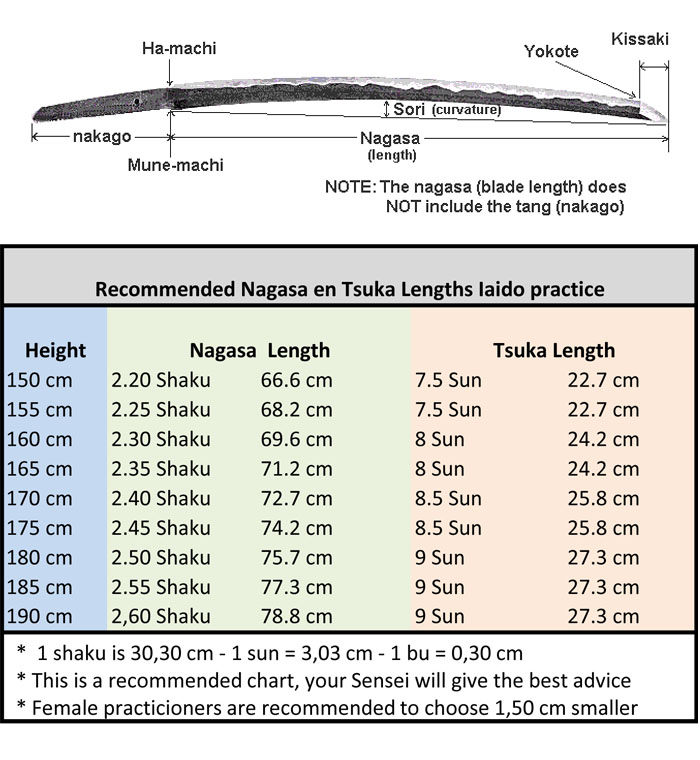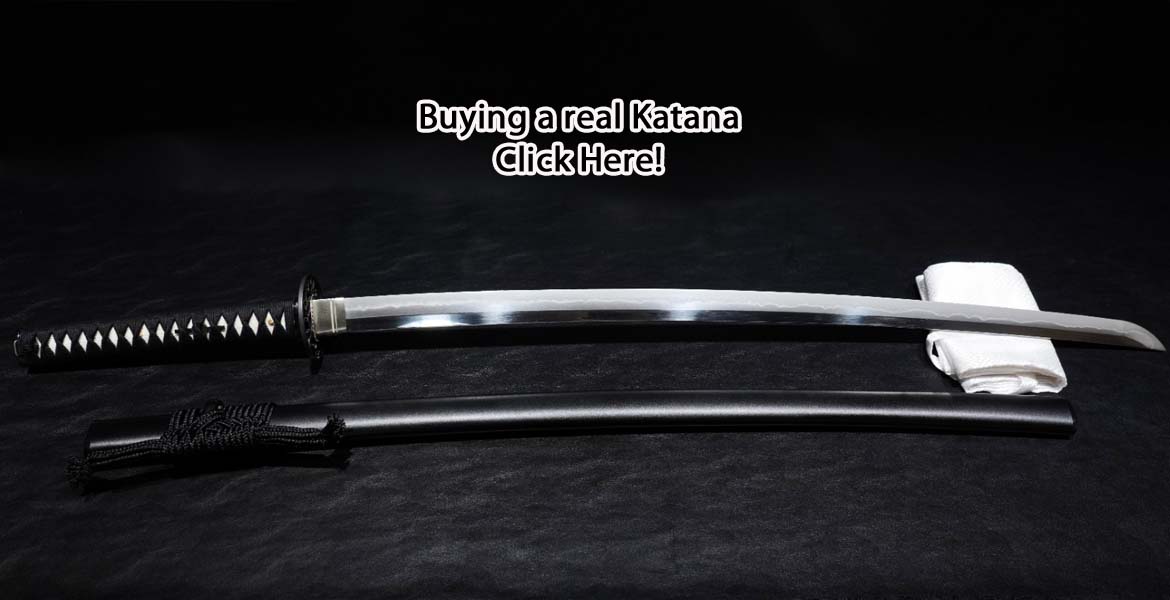Ideal dimensions of a katana?
If you train with swords or are interested in Japanese swords, you've probably heard of the katana . A katana is an ancient Japanese sword known for its sharpness, strength and history.
In addition to its particularly elegant appearance, it is the proportions that contribute to its balance and functionality.
But what are the ideal dimensions of a katana?
We will discuss the most important aspects of the dimensions of this special sword here.
Length of a katana
The length of a katana is a crucial part of its design. In general, the total length of a standard katana varies between 100 and 110 centimeters. This length makes it possible to handle the sword well with the hands, while still having enough length or reach to cut effectively.
Keep in mind that historically there are many variants such as the longer tachi swords. An ideal length always depended on how the swords were handled during war.
A very important dimension in determining the length of a Katana is the blade length. That's the part that can actually cut. Of these, the top 25 centimeters are the most important, this is called the monouchi , or the “ killing region ”. The standard blade length usually varies between 65 and 75 centimeters. The old Japanese length measurement that we use for this is the Shaku or 30.3 centimeters. You measure this from the mune-machi , the part of the leaf that you can just see under the habaki , to the very tip of the leaf.
A martial arts practitioner usually selects a Katana that suits his own physique. Someone with long arms can often wield a longer sword. You also want your movements to be smooth while pulling ( Nukitsuke ) or putting back (Noto).

The blade also has various parts with their own names, such as the kissaki (point) and mune (spine).
Weight
Several factors influence the weight of a samurai sword. This depends on various factors such as the length, design of the blade and the materials used. Usually you talk about the weight of the sword without the sheath. The bo-hi or longitudinal groove has a major impact on the total sword weight. The blacksmiths apply this bo-hi to create a lighter, but very manoeuvrable sword that is also very strong. Martial arts practitioners usually use the bo-hi as a training tool by causing a tachi-kaze or sword wind. It is also often more pleasant to train with a lighter sword because it puts less strain on your joints and your techniques look faster. A standard katana easily weighs between 900 and 1400 grams.
For optimal balance, it is important that the sword weight must be well distributed during use.
Handle
This balance certainly also comes from the length of the tsuka or handle. A shorter handle ensures that the point of balance is forward. Of course, a longer handle will have the opposite effect.
A handle has an average length of 25 to 30 centimeters. Depending on your preference and fighting style, you can hold the handle comfortably and firmly.
It is therefore very important to look at the handle length so that you choose a sword with good balance.
Quality Japanese swords also pay a lot of attention to the tsuka in addition to the blade . You have a number of options in terms of design, including the Imo , Hyojun and Rikko . The ito or wrapping is often made of cotton, silk or leather that is applied very tightly around the wooden core.
Sword scabbard
When people generally talk about the weight of a sword, the sheath is not included. Of course it does affect the total katana weight. This obviously varies with the length of the blade as I assume that the sheath is handmade and therefore fits the blade. Typically a sheath will be between 65 and 80 centimeters. A sheath ensured that a Samurai warrior could not cut himself on the blade while carrying it. Of course, the sword itself was also protected when not in use. A traditional sheath is made of wood and beautifully varnished so that the wood will not rot quickly.
The ideal dimensions are therefore very personal and depend on quite a few factors. Consider personal body proportions, style of training, purpose of purchasing the sword, total sword weight and personal preference. Your ultimate goal, especially if you are purchasing a sword for use, will be to choose a well-balanced Katana so that you can achieve the most optimal performance.
With the correct size and good balance you can wield a katana in the way that the Japanese Samurai sword gets its legendary strength, precision and agility.
When buying a katana , various aspects are important to make a good choice. You can always obtain free advice from the specialists at Samurai-Katana-Shop.


